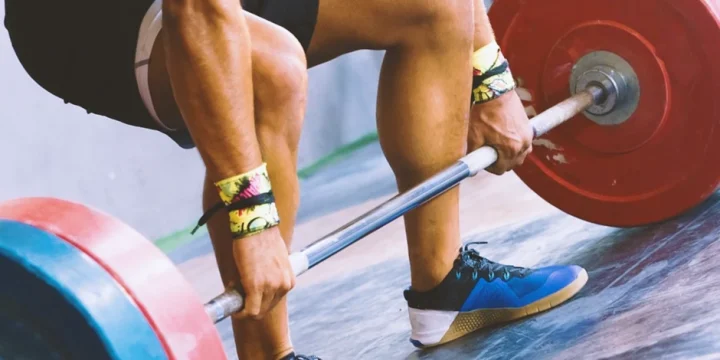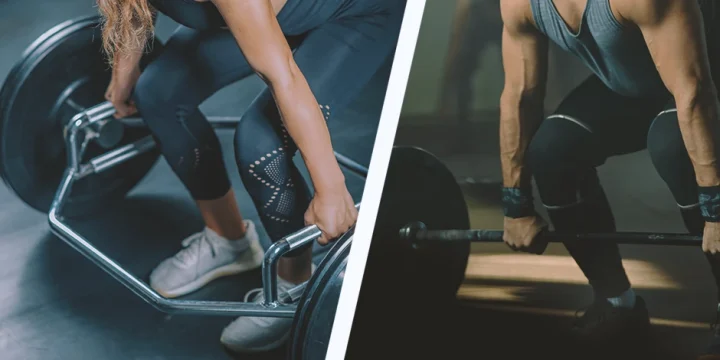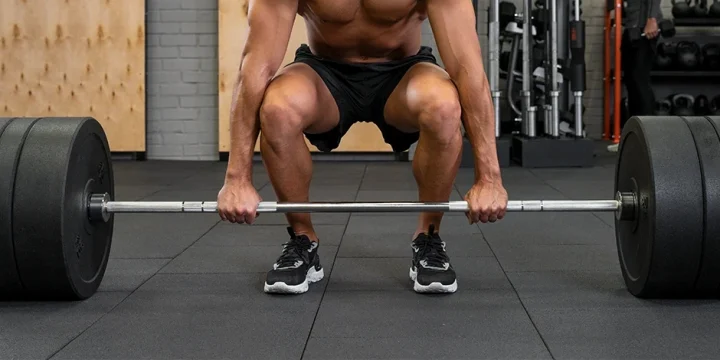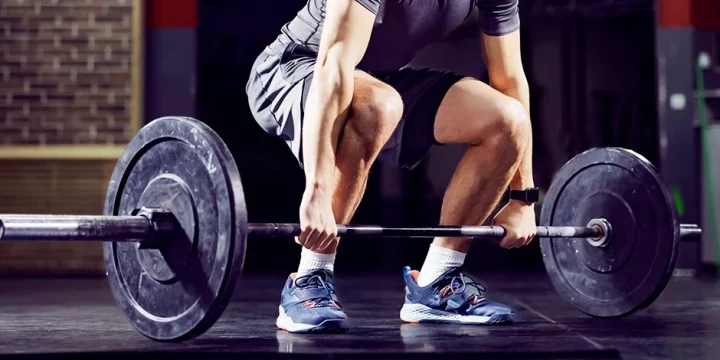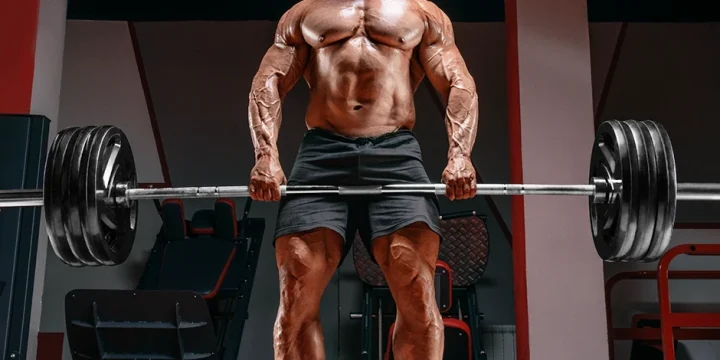The single-leg deadlift is a versatile and challenging movement that can improve your balance, core strength, and entire lower body function.
I’ve used unilateral exercises like the single-leg deadlift with fitness clients over the past decade to address any muscular imbalances holding them back in their other workouts.
However, it’s essential to approach this exercise with the proper technique to minimize injury risk. In this article, I’ll share all I know about the single-leg deadlift, breaking down its benefits, risks, and optimal execution.
Let’s begin.
Quick Summary
- The single-leg deadlift is similar to a traditional deadlift, but you have one leg extended behind you.
- The single-leg deadlift, also known as the single-leg Romanian deadlift or one-leg deadlift, works the posterior chain.
- According to research by the International Journal of Exercise Science, the single-leg deadlift has a lower risk of injury because of the reduced axial load on the spine compared to bilateral exercises.
- Based on my years of training clients, the single-leg deadlift stands out as a key exercise for correcting muscular imbalances and enhancing athletic performance.
How to Do a Single-Leg Deadlift

The single-leg deadlift, or single-leg Romanian deadlift, is a unilateral exercise.
Research in the National Library of Medicine shows it strengthens the posterior chain, including glutes, hamstrings, and erector spinae [1].
In my experience training athletes, this exercise notably boosts performance in unilateral sports like running, walking, and cycling, with many clients reporting increased endurance and strength in their strides.
Here I’ll describe how to do the single-leg deadlift with two dumbbells and cover variations later.
Here’s how to do it:
- Stand with your feet hip-width apart and pick up two dumbbells, one in each hand.
- Kick one leg back while keeping the other leg straight on the ground.
- Push the hips back and lean the torso forward while maintaining a slight bend in the knee.
- Hang your arms straight down.
- Keep your arms and shoulders pulled back and your core tight.
- Descend until mid-shin level with the torso parallel to the floor, then pull weights upward.
- Push your hips forward, squeeze your glutes, and raise your body back up.
- At the same time, slowly return the extended leg to the starting position; it is now your standing leg.
- Repeat the desired reps without standing on both legs until the set is complete.
Related: Romanian Deadlift vs Deadlift: Key Differences Unveiled
Muscles Worked
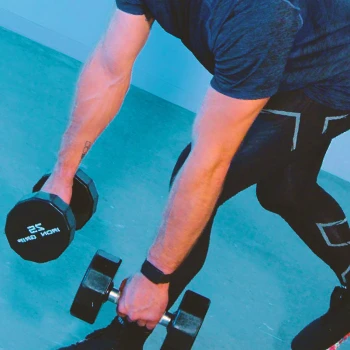
The single-leg deadlift engages the hamstrings, upper back, core (including the lower back and abs), spinal erectors, and glutes.
Here’s how:
- The hamstrings work to flex the knee joint and extend the hip.
- Upper back muscles activate to pull the shoulders back and together.
- Core muscles contract to stabilize the spine.
- The glutes are the primary muscle group used for hip extension, while the gluteus medius is responsible for balancing on one leg.
“The posterior chain muscles live on the backside of your body and include the glutes, hamstrings, calves, erector spinae, lats, and rear shoulder muscles.”
-Sara Lindberg, BS, MEd
Single-Leg Deadlift Benefits
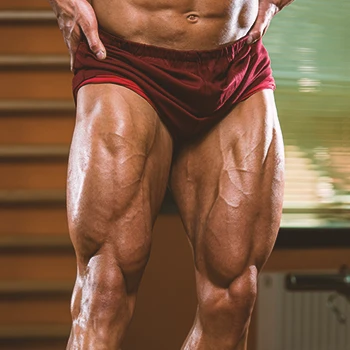
Studies by Sports Medicine - Open list multiple benefits associated with single-leg deadlifts [2].
They include:
- It increases muscular strength and builds muscle mass.
- It works the posterior chain (glutes, hamstrings, and erector spinae) for overall health, human performance, chronic low back pain improvement, and injury prevention.
- Being a unilateral exercise, it works one leg at a time.
- Single-leg deadlifts improve performance in unilateral sports movements such as running, walking, and cycling.
- It improves balance and can help in correcting asymmetries between limbs and underlying muscular imbalances, potentially reducing the risk of injuries and improving sports performance.
- Lighter weights may be more beneficial for single-leg deadlifts than ultra-heavy weights due to higher muscle activation.
- According to studies published by the International Journal of Exercise Science, the single-leg deadlift has a lower risk of injury because of the reduced axial load on the spine compared to bilateral exercises [3].
Common Mistakes
- Maintaining good form is essential when performing this movement, even if it means you can’t get as low.
- Maintain a soft bend to the knee; don’t bend more than necessary to gain greater depth; the focus is on loading the posterior muscles.
- Keep the spine straight, avoiding rounding or arching throughout the entire movement.
- The back leg should remain straight and in line with the spine.
Modifications and Variations

If you're new to the single-leg deadlift, perfect your form with these modifications first, as I recommend to my clients, before progressing to the variations below.
- Elevated Rear Foot Single-Leg Deadlift: A variation similar to Bulgarian split squats in which the rear leg is extended and supported on a bench, step stool, or platform. The back leg does not generate force but acts as a support instead.
- Single-Leg Deadlift with Support: This version uses a variety of supports, like a rack squat, door, or wall. Beginners may use a wall or door for stability, applying one hand to the support as they move through the entire range of motion.
- Bodyweight Single-Leg Deadlift: Bodyweight exercises are a great way to master the exercise. Add weights once you develop balance.
- Single-Leg Deadlift with Resistance Band and Knee Drive: Once you can successfully do the single-leg deadlift without support, progress by adding resistance bands to a squat rack or holding under the standing leg. Add further challenges by adding a knee drive at the end of the exercise.
“You can get comfortable with the movement pattern first, then remove the object and master the balancing component.”
- Matt Pippin, CSCS
After mastering the single-leg deadlift with modifications and dumbbells, as I guide my clients, explore these variations to challenge your form and strength:
- Single-Leg Deadlift with Kettlebell: If you use a single kettlebell, hold it with the same side hand as the planted leg. If using two kettlebells, have one in each hand. The kettlebell should come down straight, just in front of the feet.
- Single-Leg Deadlift with Barbell: This advanced single-leg deadlift uses a barbell and is for experienced lifters. The barbell deadlift is the only version in which starting with the weight on the ground is possible.
Training Tips

As with any strength conditioning exercise, there are a few things you can do to maximize the benefits and reduce injury risk.
They include:
- Warm Up: Perform dynamic stretching to increase blood flow and prepare your muscles for the workout.
- Start with Bodyweight: Focus on form and balance before adding external resistance.
- Maintain Control: Perform each rep slowly and deliberately, ensuring you maintain control from the starting position throughout the entire range of motion.
- Progress Gradually: Begin with lighter weights and gradually add weight as you get stronger.
- Stay Balanced: During these single-leg exercises, engage your core and fix your gaze in front of you to prevent wobbling or losing balance.
- Listen to your body: Based on what I've observed with my clients, it's vital to listen to your body and ensure you’re not overextending yourself or pushing through pain. If you experience discomfort or difficulty maintaining proper form, reduce the weight or return to body weight until you feel confident in your technique.
- Rest and Nutrition: Proper rest and nutrition, including adequate protein intake, are vital to muscle growth and recovery.
FAQs
Is the Single-Leg Deadlift Better than the Deadlift?
The single-leg deadlift is better than the deadlift for improving balance and core stability because you are standing on one leg. Both exercises have the same movement pattern, effectively working the same muscles, primarily the posterior chain.
What Are Single-Leg Deadlifts Good For?
Single-leg deadlifts are good for building leg muscles due to their balance component. It also builds muscle endurance with light weights and high reps.
References:
- https://www.ncbi.nlm.nih.gov/pmc/articles/PMC3716991/
- https://www.ncbi.nlm.nih.gov/pmc/articles/PMC7940464/
- https://www.ncbi.nlm.nih.gov/pmc/articles/PMC8136577/
About The Author
You May Also Like
